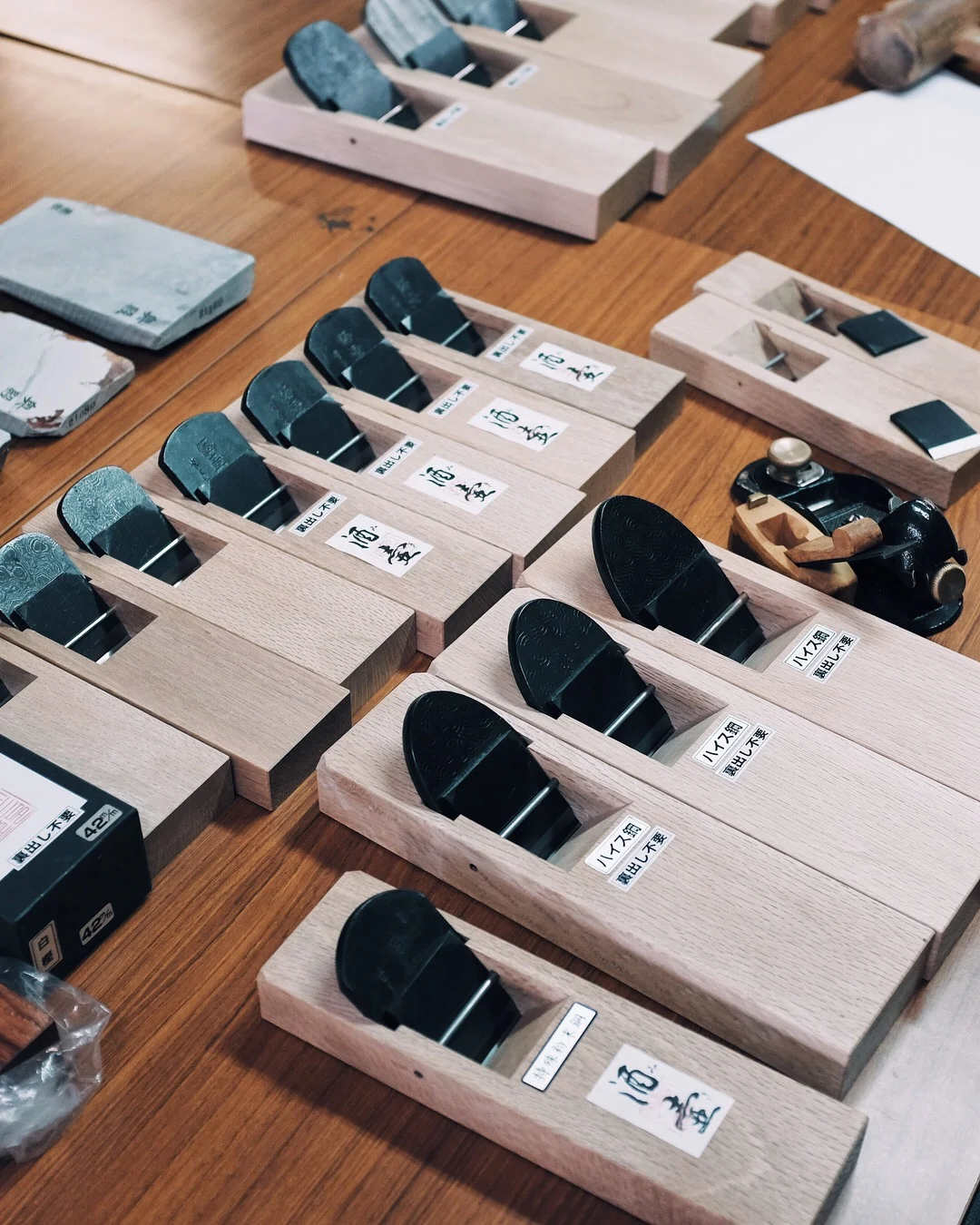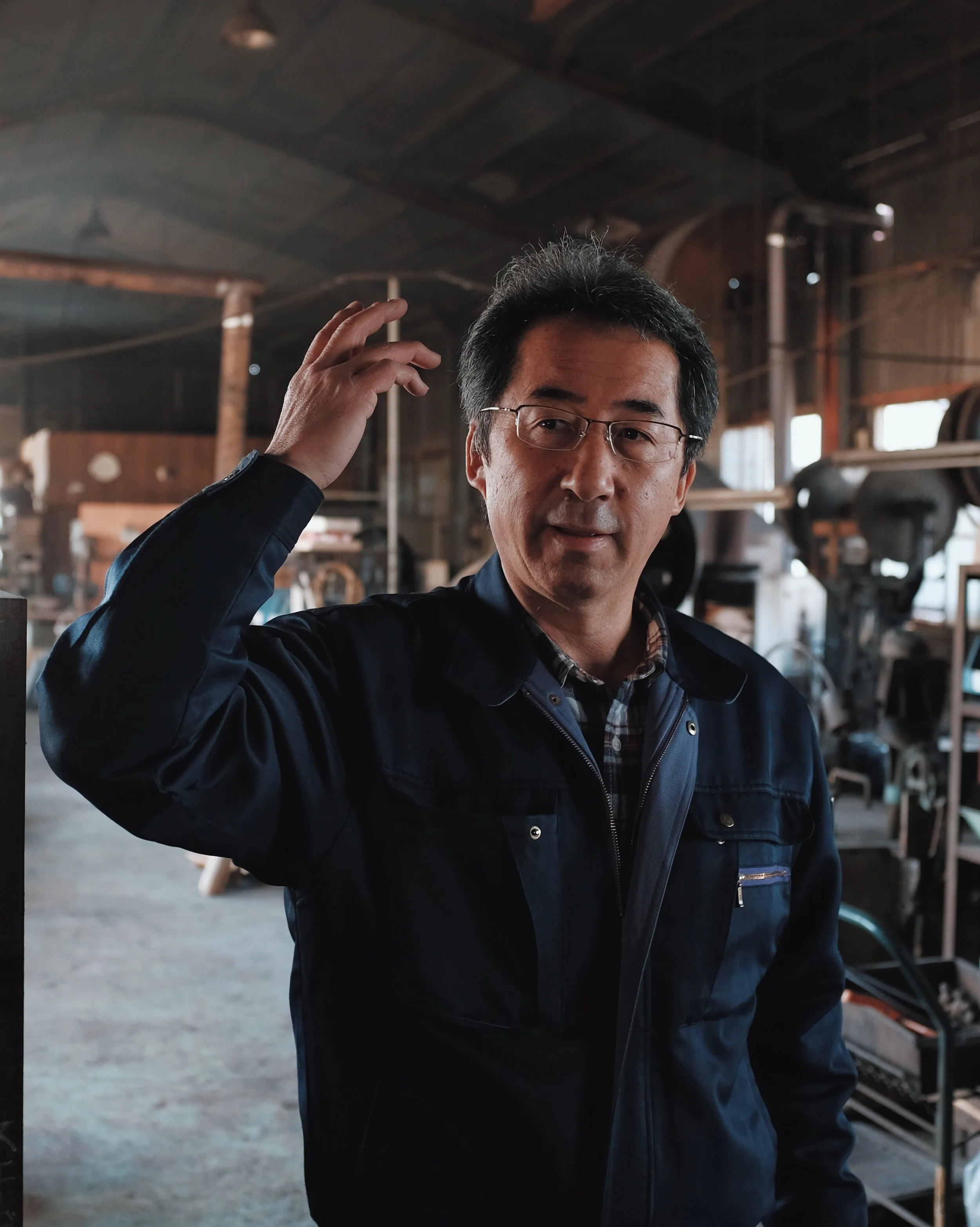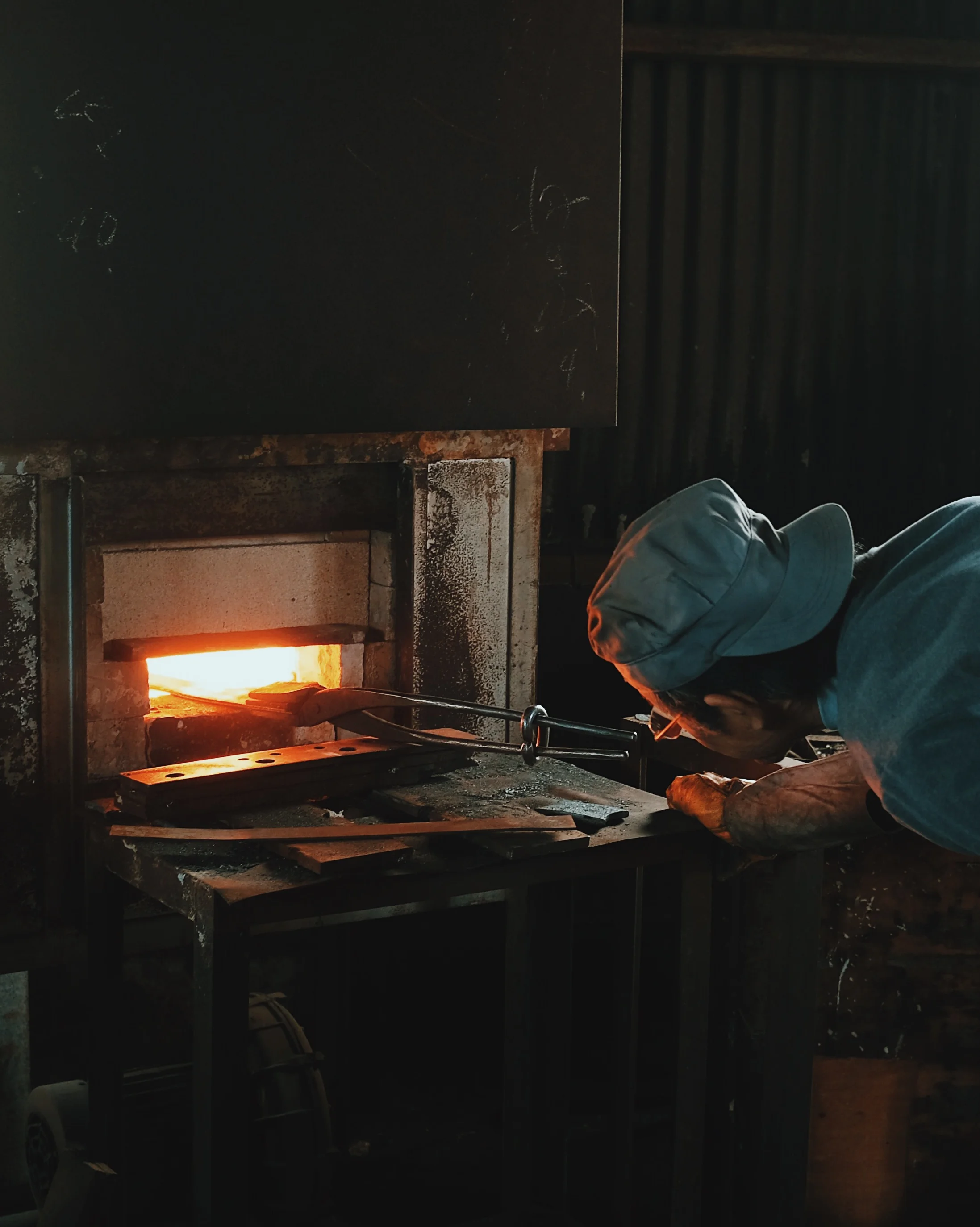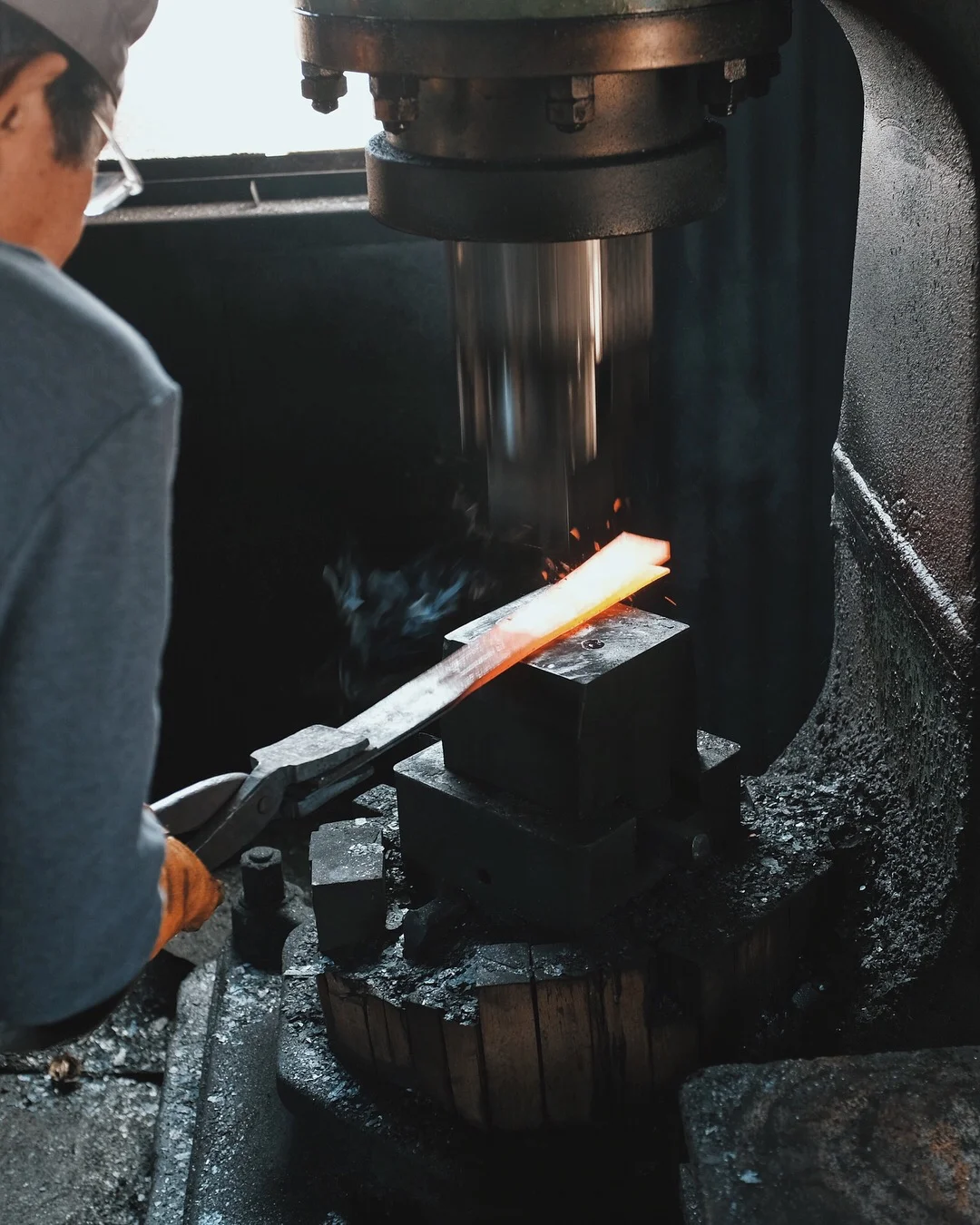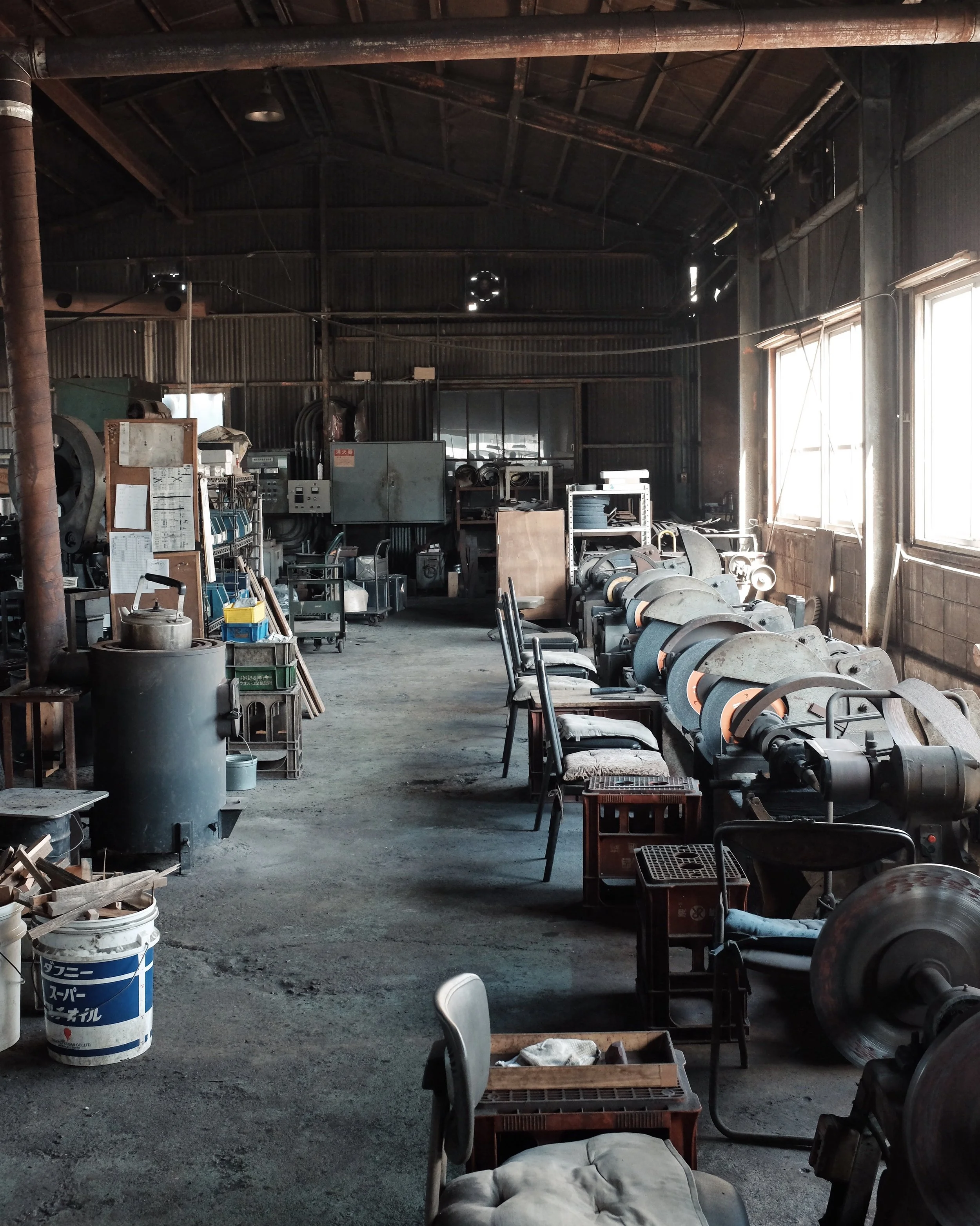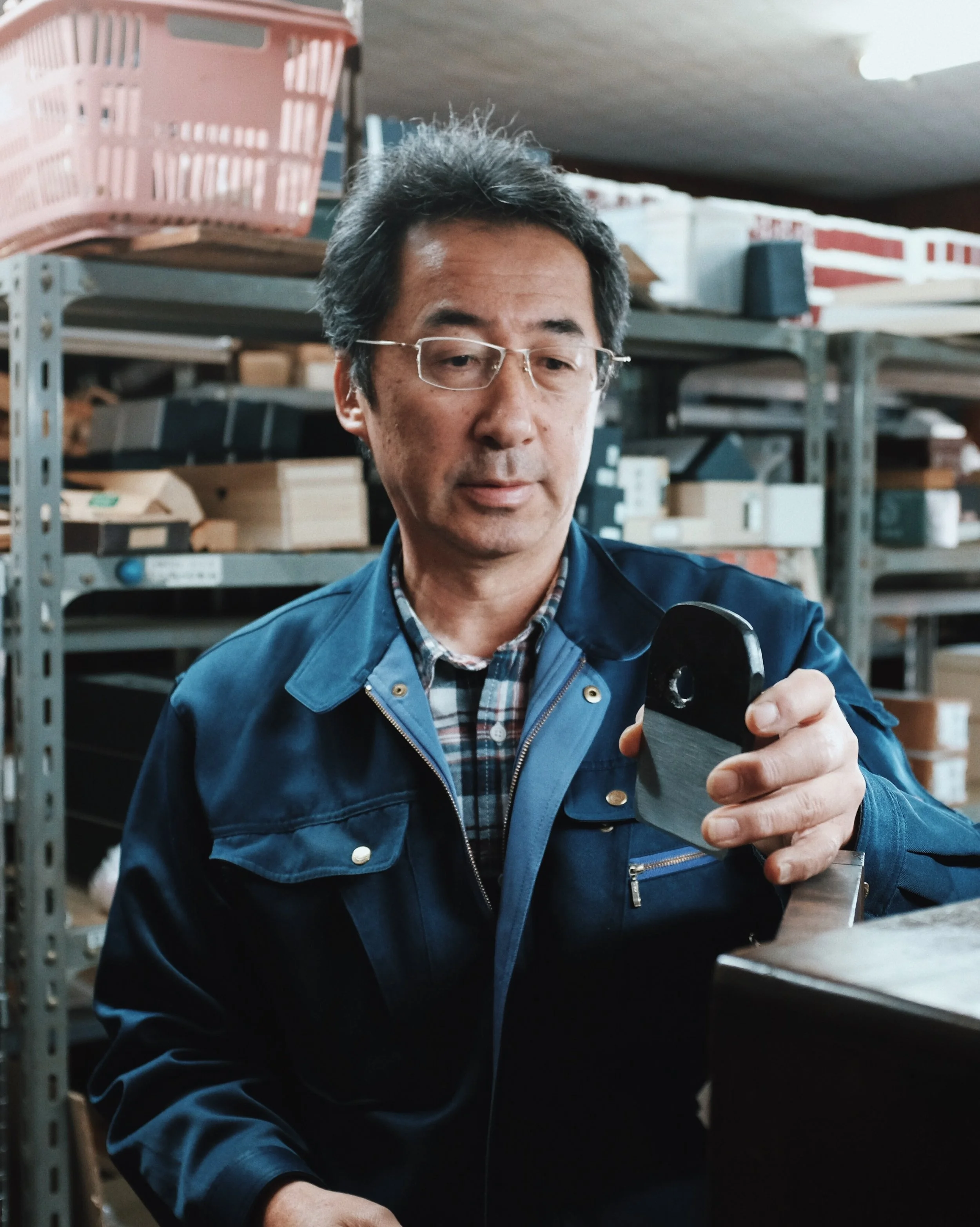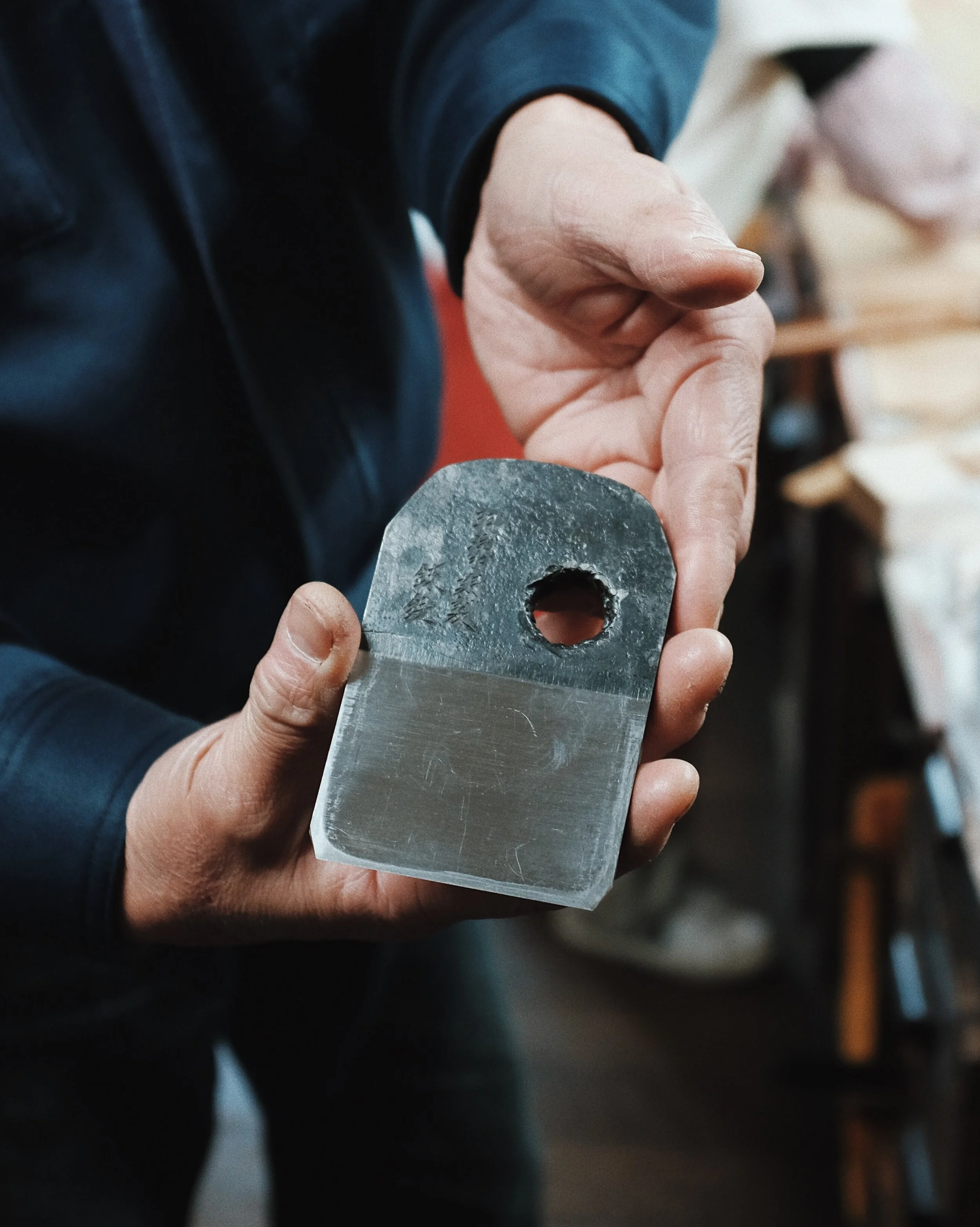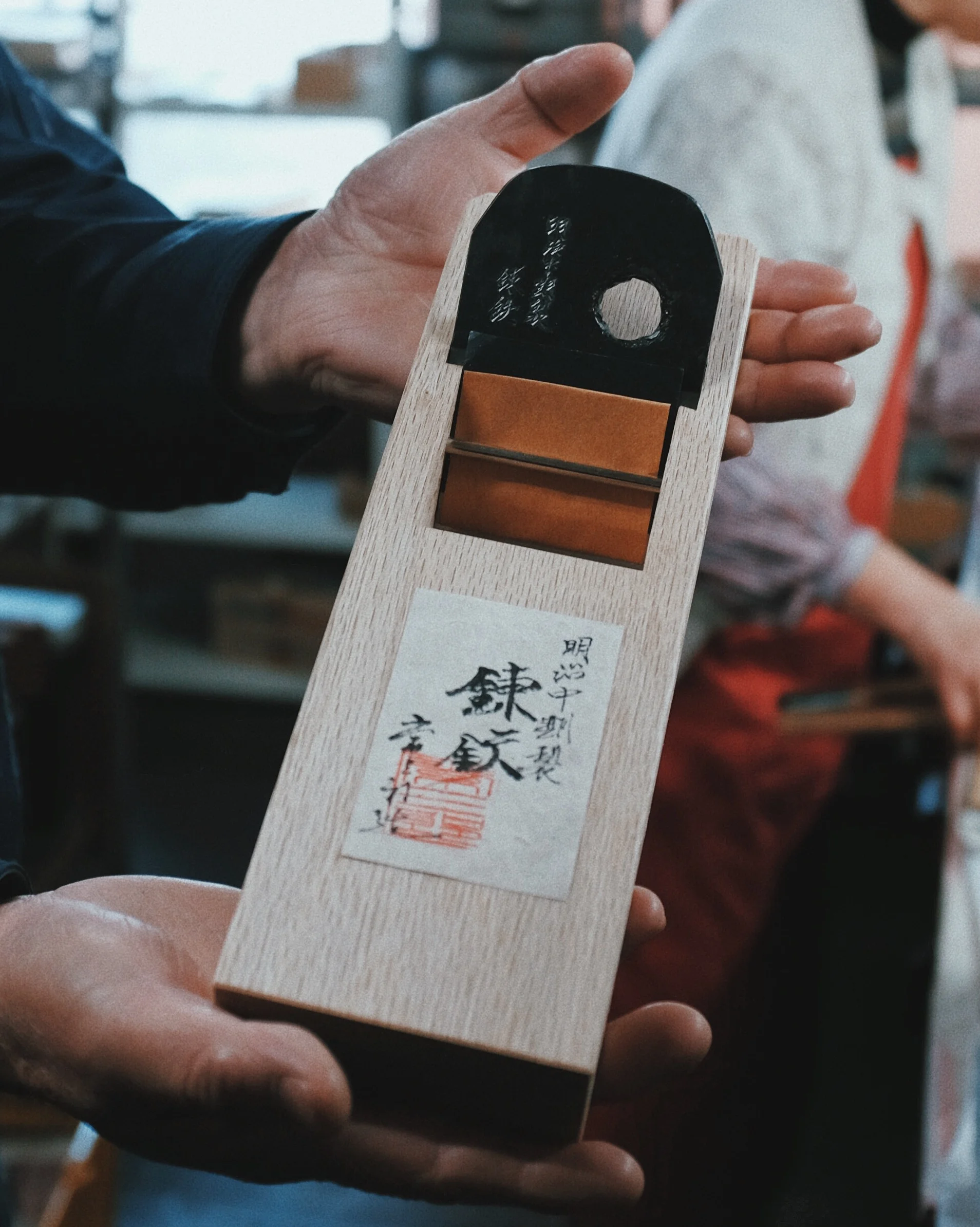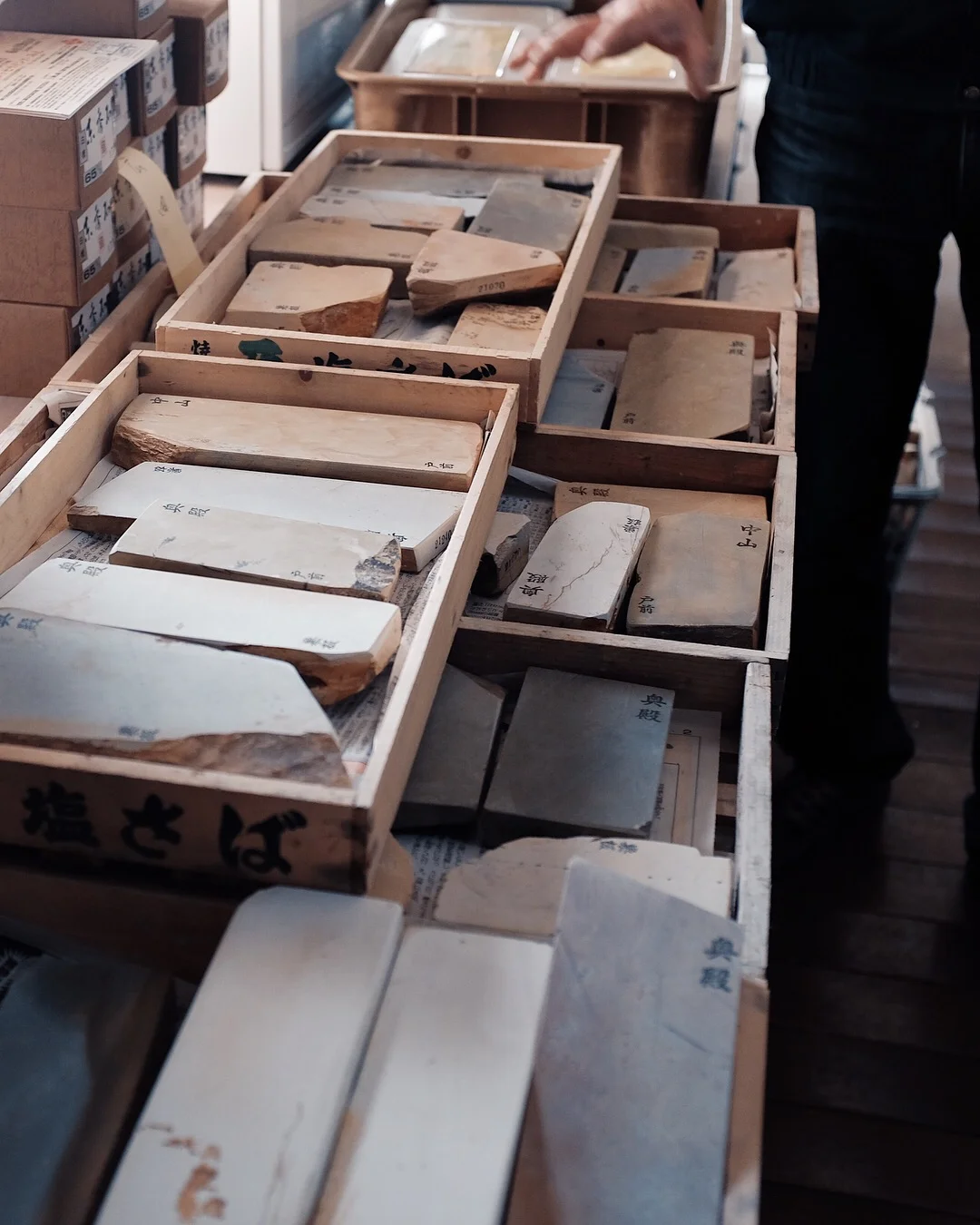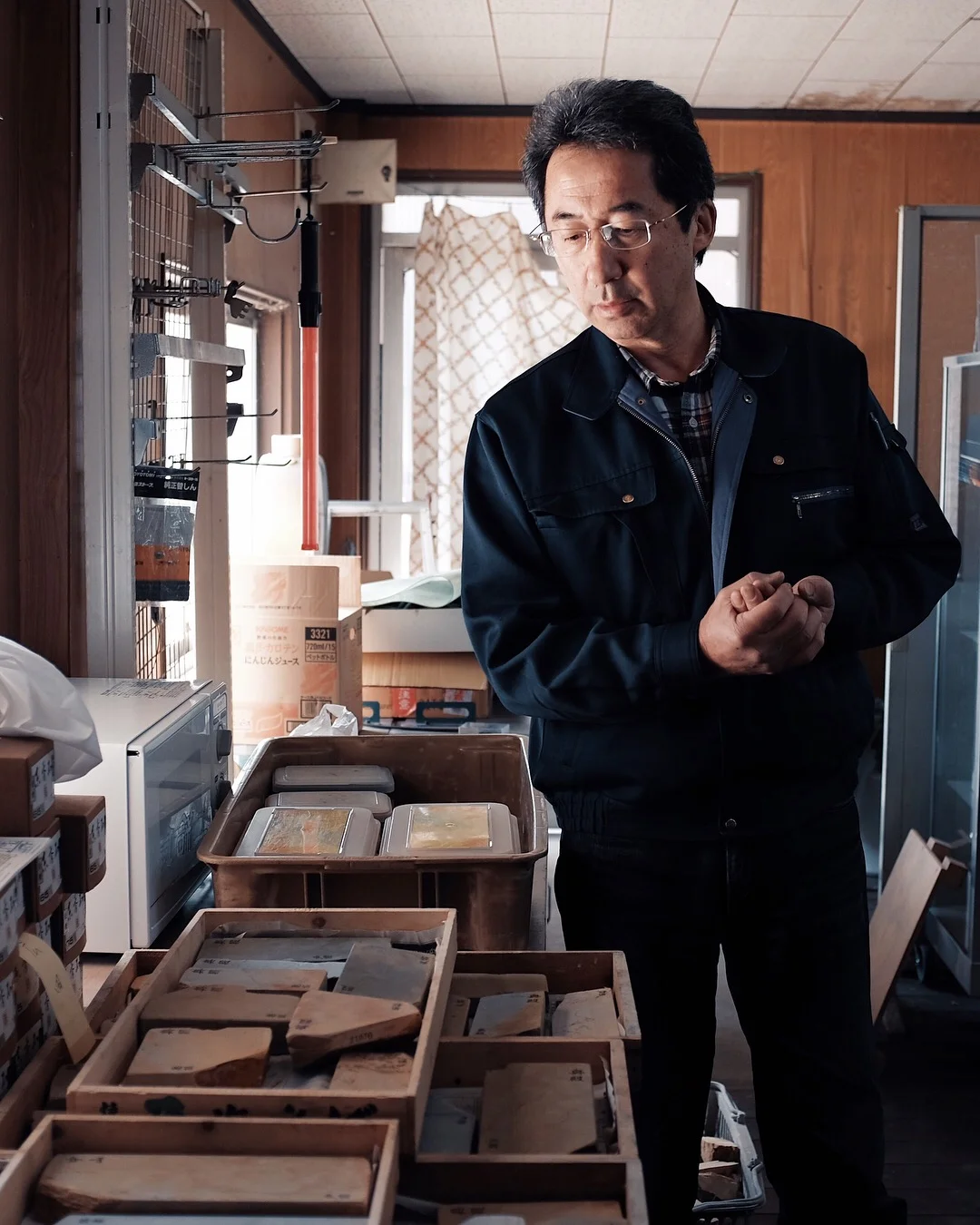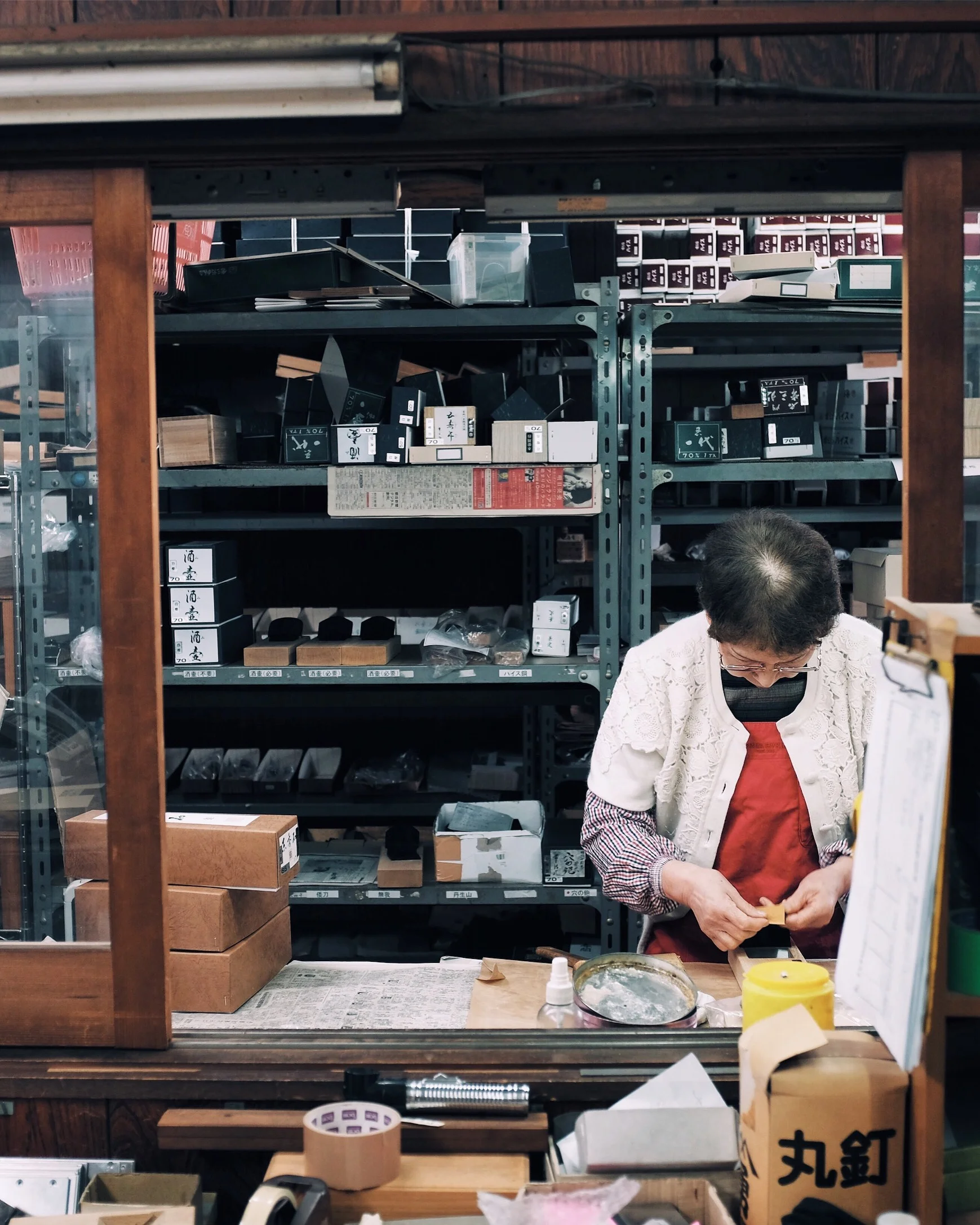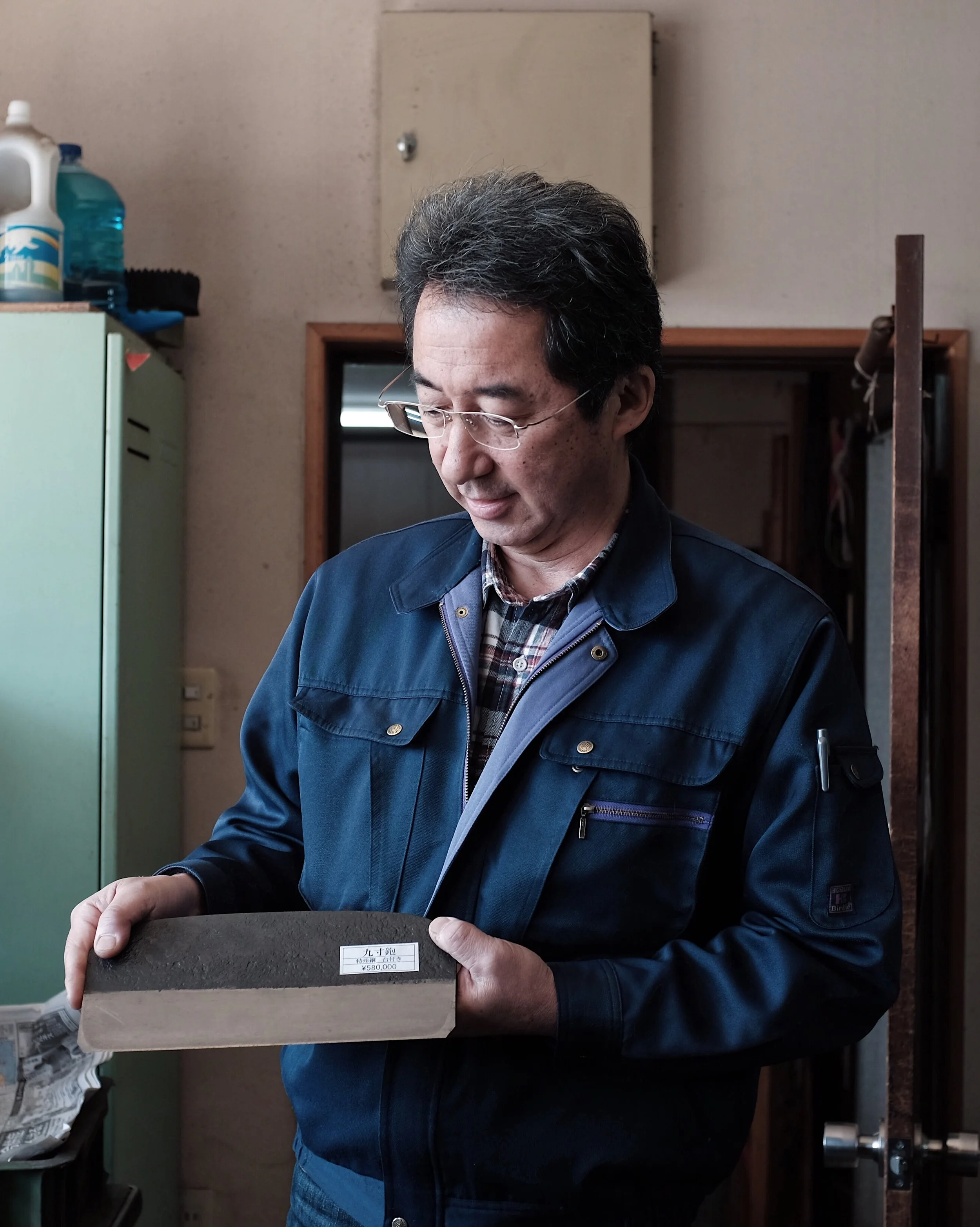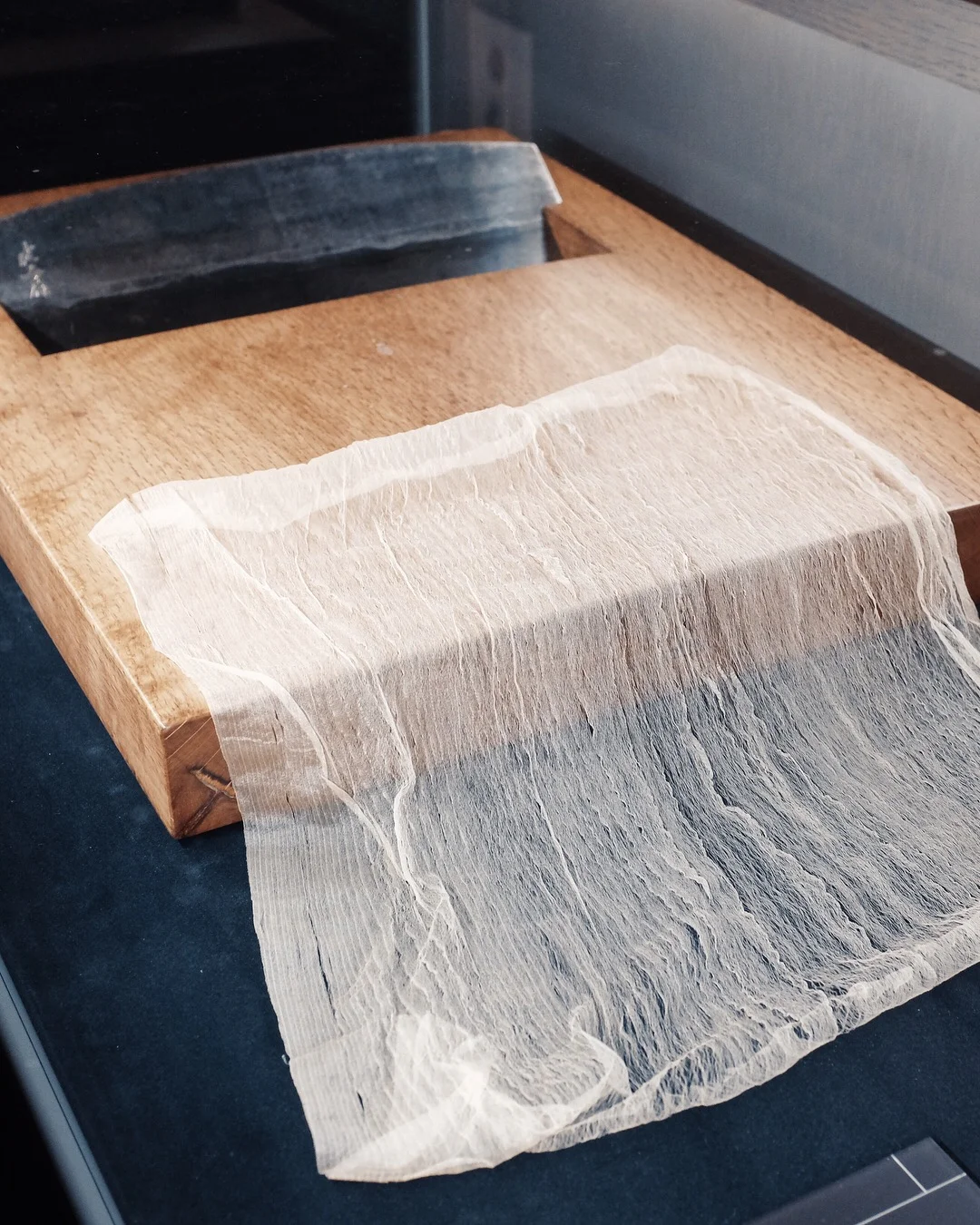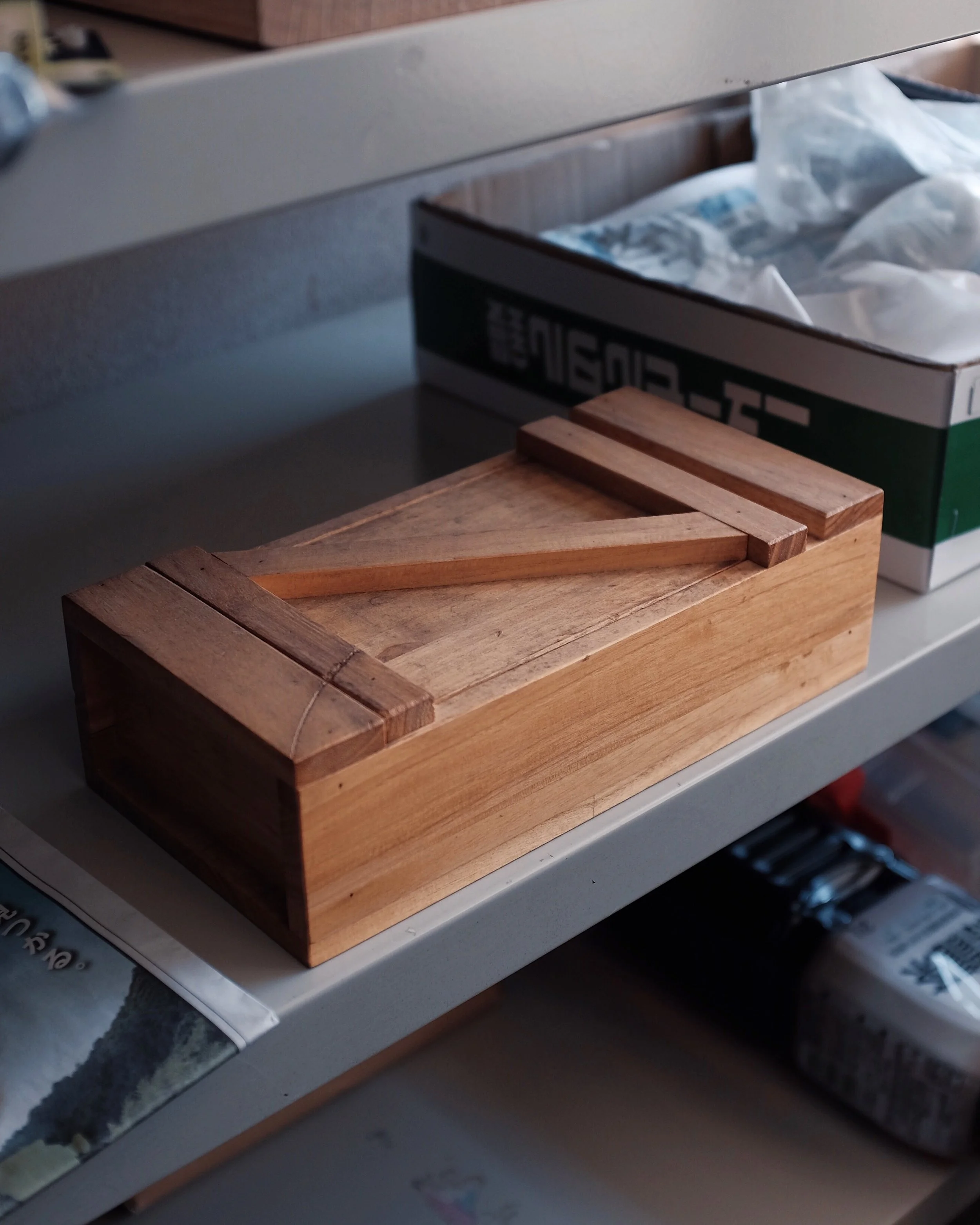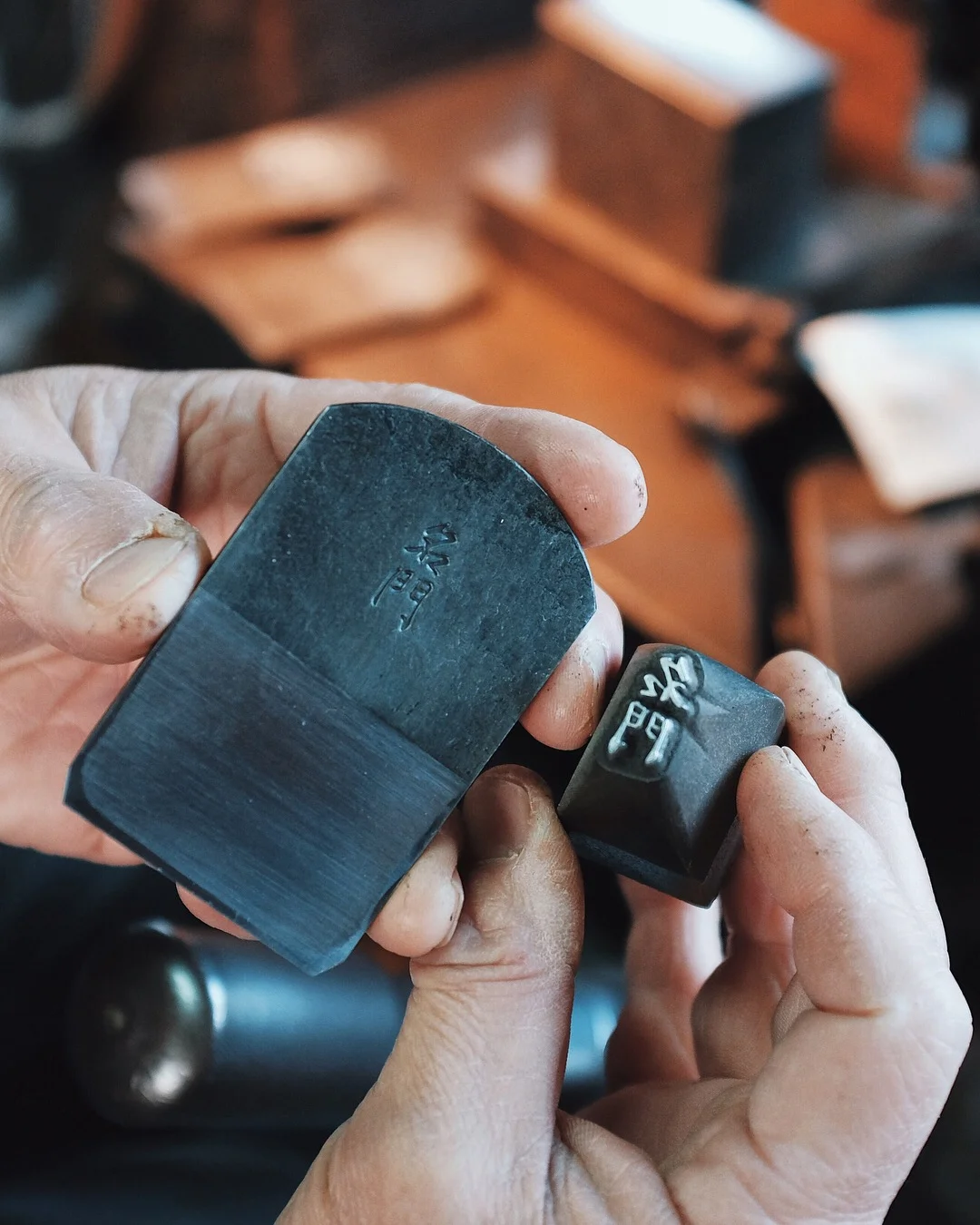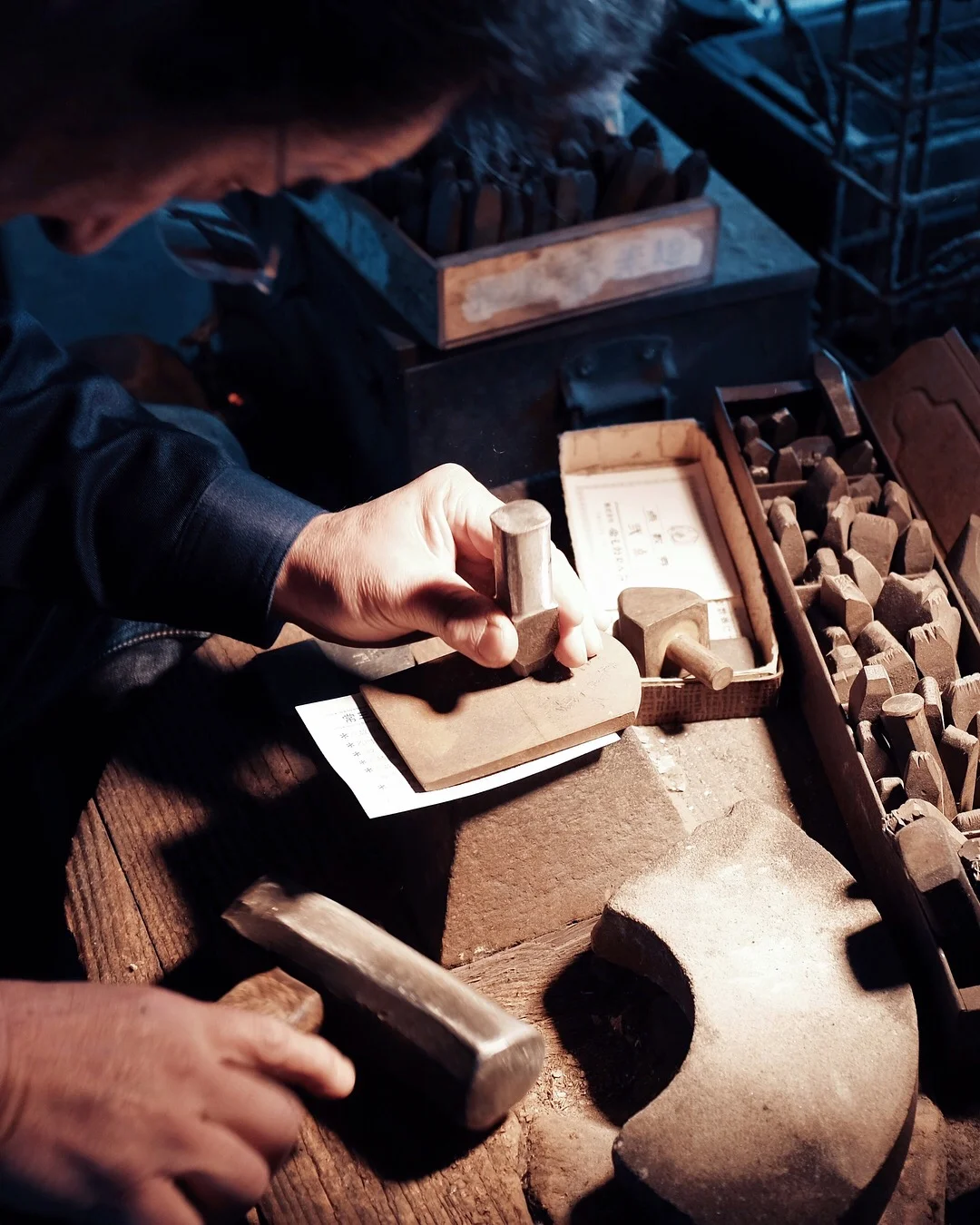Kanna Blacksmith in Hyogo, Japan | Workshop
Uozumi-san's Workshop
A while ago I had the chance to visit Hyogo, a region famous for its blacksmiths. Uozumi-san kindly showed me around his family’s workshop that produces the blades for Kanna wood block planes, an age-old tool that is still at the very centre of Japanese carpentry.
Kanna | The Japanese Plane
Kanna (鉋) are quintessential Japanese carpentry tools, crucial for all types of woodwork from large shrine building to furniture making as well as everyday tableware. Consisting of a metal blade and wooden block base, Kanna are customarily used for shaving and smoothing timbers such as Hinoki and Sugi. Many artisan blacksmiths devote their entire practice to forging only Kanna blades, paying close attention to their durability and sharpness. In this journal, we recall Yosh’s visit to a Kanna workshop in Japan.
The smith looks into the forge for the right colour of orangey-red, which indicates that the iron is at the right temperature and is ready to be hammered. A simple modern device could easily read the temperature instead, but the smith prefers to use his own eyes.
Japanese blades are a combination of a hard steel ‘Hagane’ wrapped around a soft iron core ’Shigane’. This is an old smithing trick to get the best properties out of both metals. Too hard and the brittle blade will break, too soft and the blade will not stay sharp. By folding both metals together, you achieve a harmony.
Uozumi-san sources his iron from dismantled bridges and railway tracks - some from the UK, surprisingly - because he needs ‘old iron’ with impurities rather than modern day metals that are too pure to work with by hand. Pictured here is one of his favourite Kannas - a blade with a rivet hole still intact, straight from the bridge it once was!
I have visited workshops in Japan that are impeccably neat and tidy, but personally I prefer ones like this. An old, stripped-back building with a wood stove in the corner, expired calendars on the walls, and heaps of crates labelled with the family name. Pictured here are Uozumi-san’s grinding wheels that shape the steel from the forge into kanna blades.
‘Toishi’ are whetstones used to sharpen Kanna blades. It is common to use a modern composite-like stone, but Uozumi-san prefers natural mineral stones from the Hyogo mountains. He gathers them by hand and polishes them flat, picking out each mineral by eye. I was kindly given a toishi of his, they tell me it is quite valuable.
This quiet spot is tucked away at the back of the workshop, far from all the heat and noise of the forge. New Kannas are packed into boxes here, ready to be used for the first time by their owners.
Here’s Uozumi-san proudly holding his prize-winning Kanna blade. Japanese carpenters ‘Daiku’ like to compete to shave the thinnest, continuous slice of wood using a Kanna. It is quite a cultural phenomenon. Twice a year they meet up across Japan - usually somewhere in the wilderness - and set up cutting, shaving, and sharpening stations. When you shave wood to only fractions of a millimetre, the wood becomes almost like a cloth.
I found this tiny Daikusan box (a carpenter’s tool box), resting in the workshop’s store room. Lovingly homemade with a just couple Kannas inside. Similar to our own set in the store, with the classic sliding and locking lid.
This is just a small selection of the different types of Kannas available. When you counter-in blade shape, size, and steel grades, there are hundreds of different kinds. It is difficult to explain just how important Kannas are to Japanese carpentry, they are part of the cultural identity of Japanese woodworking.
And the last piece, hammering the maker’s mark on every new blade. Uozumi-san and I had never met before this and he offered to show me around on the same day, incredibly kind of him. If you are interested in reading more about Kanna, please refer to our previous journal 'Kanna: An Exploration of Traditional Japanese Carpentry’.

